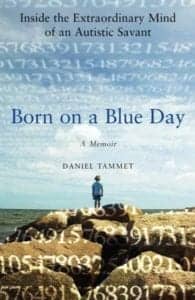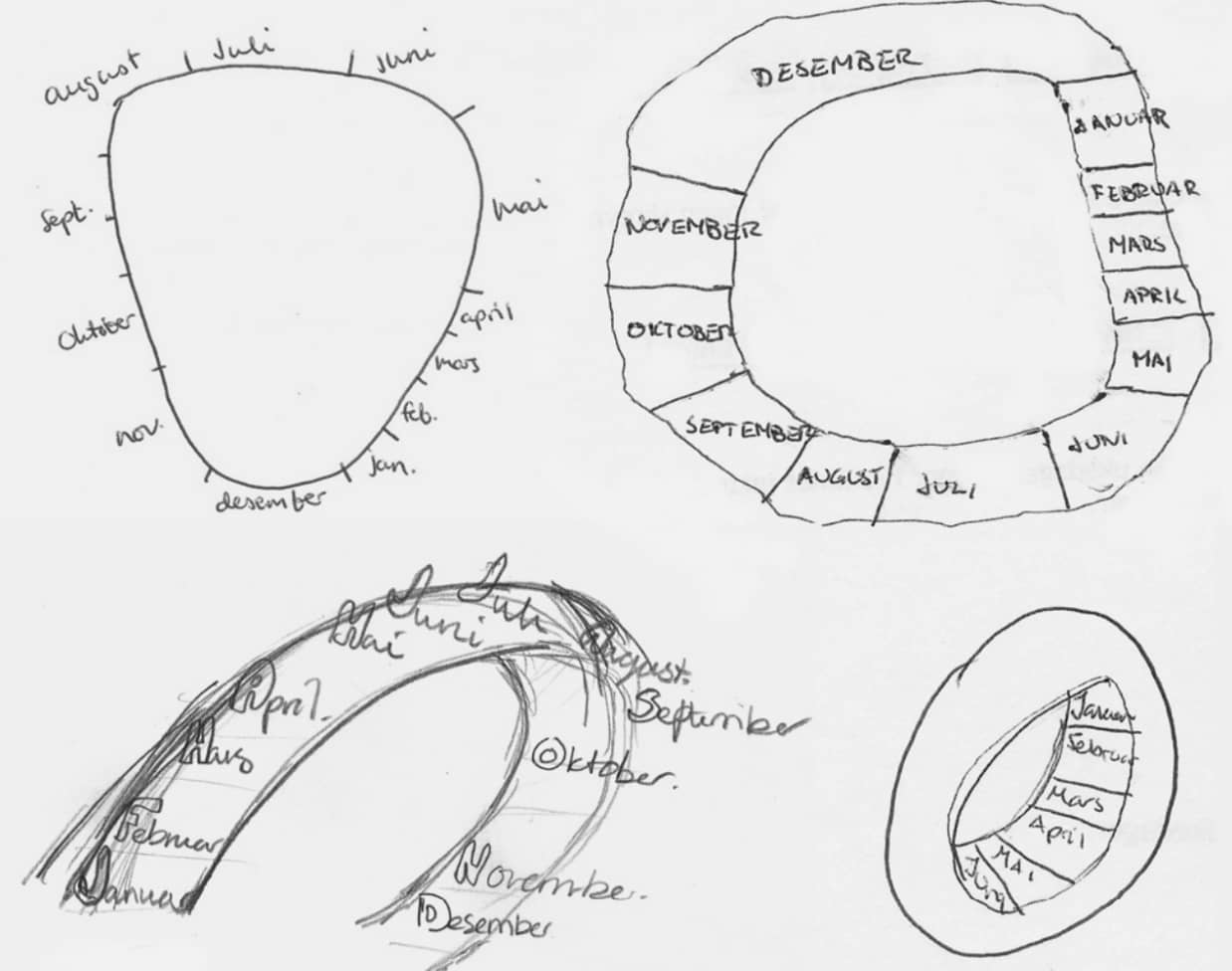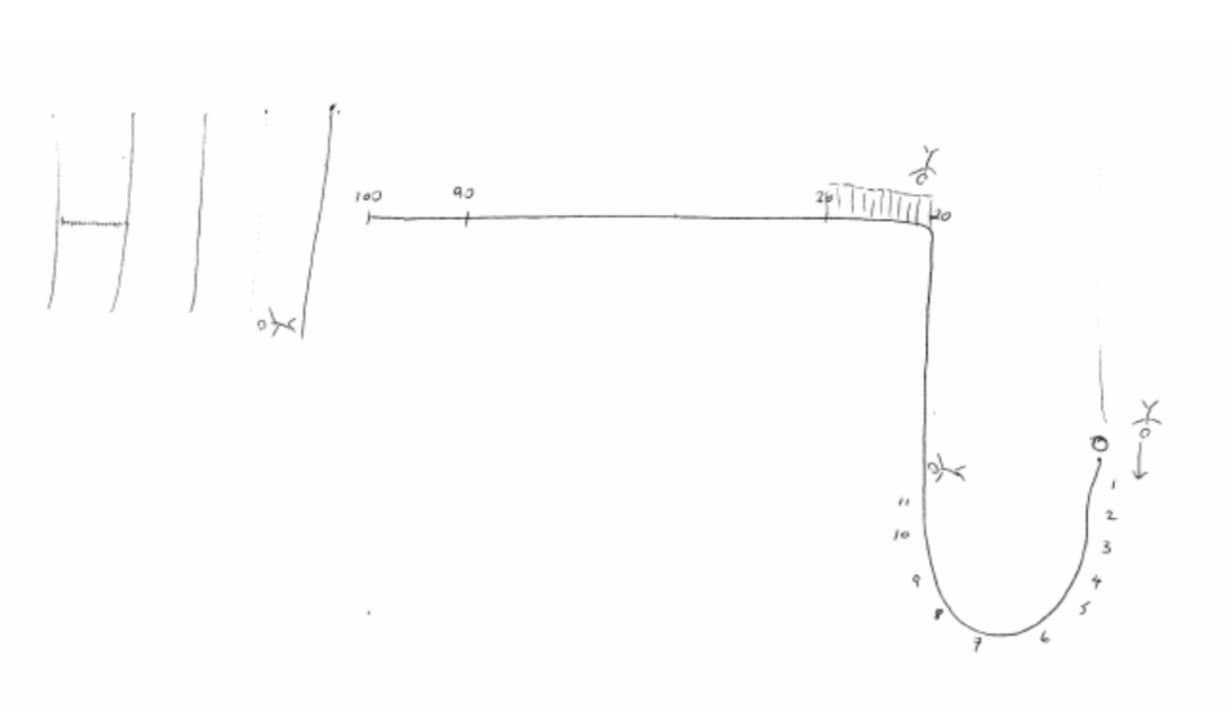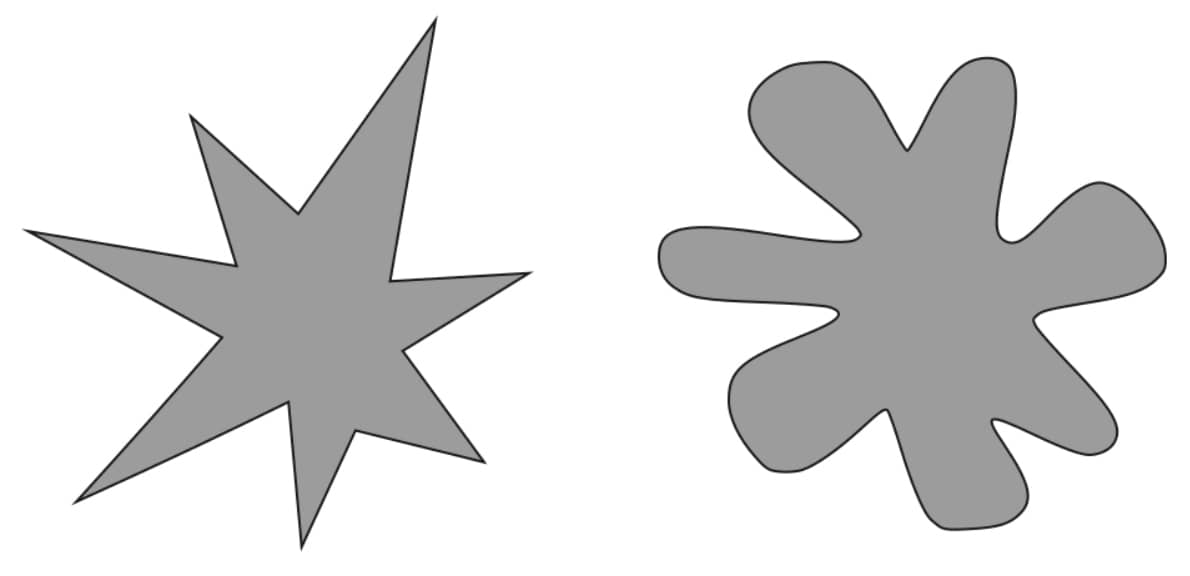Podcast: Download
Subscribe: Apple Podcasts | RSS
 With so many types of synesthesia out there, it can be hard to understand exactly what it is.
With so many types of synesthesia out there, it can be hard to understand exactly what it is.
That’s why it’s important to look at the word itself first:
It shares a root with anesthesia. This word means “no sensation.”
“Syn” means that something is joined or coupled together. Thus, synesthesia means the joining or coupling of two or more sensations.
And because many different kinds of sensations can be joined, that’s why there are so many synesthesia types.
On this page, we’ll go through the definitions of each one. You’ll discover specific examples and interesting tidbits from scientific research.
That way, you can leave with the fullest possible understanding of this condition. You might even be able to invoke it too using a resource I’ll share below.
Let’s get started.
The 10 Types of Synesthesia (with Examples, Causes, and Symptoms)
In his book on the topic, neurologist Richard E. Cytowic states that approximately 4% of the population experience some form of synesthesia.
Exactly how long people experience their synesthesia is unknown, but many seem to drift in and out of it.
In Wednesday Is Indigo Blue: Discovering the Brain of Synesthesia, Cytowic and his co-authors David Eagleman and Dmitri Nabokov found that evolutionary pressures may shape when and for how long a synesthesia condition affects people.
The condition also tends to be unidirectional. As they point out, a person might experience the letter J as blue. However, seeing blue does not cause them to think about the letter J or experience “J-ness.”
Most forms of synesthesia belong roughly to what some people call “Projection Synesthesia.” That is, something in the brain causes their minds to project senses that aren’t there for the rest of us. Often they tend to involve colors.
So with these aspects in mind, let’s dig into as many types of synesthesia as we can.
One: Colored Days of the Week
Here’s how Daniel Tammet discusses his birthday:

“I was born on January 31, 1979 — a Wednesday. I know it was a Wednesday, because the date is blue in my mind and Wednesdays are always blue.”
In his book, Born on a Blue Day: A Memoir of Aspergers and an Extraordinary Mind, Tamet says that Tuesday is a “warm color” and Thursday is “fuzzy.”
This lack of specificity for some days of the week should remind us of the consistency issue raised by Cytowic. Or it’s possible that some days have substances for Tamet rather than colors.
Is this the same as associating numbers with colors. Not necessarily. For that we need to learn more about our next type.
Two: Grapheme Color Synesthesia
When you see or think about the letter “A,” does it have a color? For some people it does. Likewise with numbers.
Some people will read letters and numbers and see them as colors. Others with grapheme color synesthesia will see letters and numbers as black marks on white paper but think about them as colors.
In The Frog Who Croaked Blue: Synesthesia and the Mixing of the Senses, Jamie Ward gives a list of letter-color associations from two research participants.

It is interesting that different people experience these letters in different ways. This suggests just as much nurture in the development of this form of synesthesia as nature.
Three: Chromesthesia
Chromesthesia, or colored hearing, means that the individual experiences colors connected with sounds.
Researchers have found that sounds can trigger more than colors as well. A person with this condition might hear music and experience shapes, landscapes or textures.
Composers who may have drawn upon this type of synesthesia include Franz Liszt and Jean Sibelius.
Four: Ordinal Linguistic Personification
In this manifestation of synesthesia, the individual will experience numbers, days, months and multiple kinds of words and things as if they were people.
For example, the word “camping” might be experienced as having a gender and a tendency towards grumpiness. A stick on the street might seem to the individual as a happy young man.

In many ways, this synesthesia condition is a lot like how kids play with objects to keep themselves entertained.
Five: Mirror Touch
Imagine you see two people across the street shaking hands. But you don’t just see it. You feel it as if you were the one shaking hands. That’s what is meant by Mirror Touch synesthesia.
In a two-year study by Charlotte A. Chun and Jean-Michel Hupé, these researchers found that many kinds of people with synesthesia experience this form. There was no way to predict which kinds of people might have this kind, but they did see some indication that French people were more likely to experience grapheme color synesthesia.
Six: Spatial Sequence Synesthesia
There are at least two parts to Spatial Sequence Synesthesia, sometimes called “Number Form” synesthesia.
First, the person experiences numbers units as having distinct locations. For example, take an organizational unit like a calendar. Instead of thinking of February conceptually as a group of days, the person will experience it bound up with a location, or as if it had the qualities of a location.
Mark Price and Jason Mattingly give an example of calendar drawings in Automaticity in sequence-space synaesthesia.

Second, this unit will be experienced with references to other numbers, themselves located in space.
Jamie Ward asked a test participant to draw how she was experiencing Spatial Sequence Synesthesia.

As you can see, the participant not only has the numbers represented where they appear in space. She has indicated how she can rotate her point of view around their location.
Another point:
Part of experiencing this form of the condition might mean that people experience numbers “floating in space at a fixed distance from their body.”
Seven: Auditory-Tactile Synesthesia
Also called “Sound-Touch Synesthesia,” this form of the condition means that common sounds create physical sensations in the listener. These are typically described as “tingling” and may be intense enough to deeply disturb the individual.
Studies in people with thalamic lesions have shown that this part of the brain might be responsible for both physical and sound sensations. This area of knowledge is one place where knowing how to remember the cranial nerves could also be helpful because they contribute to some of our ability to perceive physical and auditory sensations.
Eight: Lexical-Gustatory Synesthesia
Imagine tasting the words of this article as you read it.
That’s exactly what would be happening to you now if you had lexical-gustatory synesthesia.
Researchers have found that amongst the few people who experience this condition, the experience is very intense but lacking in quality. Brain scans show that the parts of the brain involved in emotions light up, which may explain the magnitude of these experiences.

Sound-gustatory is much the same. However, in this case, the sense of taste is triggered by noises and auditory modulations in the person’s environment.
We’ve talked about taste. What about smelling colors?
This too is something that happens to people with synesthesia, but seems much less common than some of the other types.
Although subjective feelings are involved in each of these, it’s hard to say if any of them amount to emotional synesthesia as a type on its own. More research needs to be done, some of which is being uncovered by those investigating our next type.
Nine: Misophonia Synesthesia
People with misophonia can be triggered to rage by everyday sounds.
Researchers have not been able to find out much about it. Some conclude that many people fail to report their symptoms for fear of being stigmatized.
On the opposite end of the spectrum, ASMR has been all the rage over the past few years. Videos featuring all kinds of mundane sounds of racked up millions, if not billions of views on YouTube hoping to induce “auto sensory meridian response.”
These are pleasant tingling sensations that come from listening to sounds like whispering voices, tapping, blowing bubbles or chewing gum.
Ten: Ideaesthesia
Of these two images, which would you name Booba and which Kiki?

Most native English speakers will name the image on the left Kiki and the image on the right Booba.
Why?
Because hard-K sounds are conceived as being similar to sharp angles. Softer B-sounds are generally perceived as more like the rounded drawing to the right. According to Derren Bridger, marketers have long known about this tendency and used it to help dream up product names.
Much more research needs to be done on this branch of synesthesia. It’s not yet clear if colors are also involved in how people might experience these conceptual approaches to linking sounds with shapes in a conceptual way.
Can You Give Yourself Synesthesia?
I don’t think so. And I hope you never harm your brain or develop a lesion that might come with unwanted effects just to experience synesthesia.
However, you certainly can increase your ability to experience the world in a multi sensory way.
To give this a try for yourself, go through this hyperphantasia guided meditation:
In the meantime, I hope this rundown of the many different types of synesthesia helped you out.
If there are any I missed, please pop them into the discussion area so we can all learn about them. And if you’d like to be able to memorize all of these different terms we discussed today, check out my FREE Memory Improvement Kit today:
Related Posts
- Procedural Memory: The Ultimate Guide (With Examples)
Procedural memory is easy to understand when you have clear examples. Read this post now…
- The 10 Main Types Of Thinking (And How To Use Them Better)
If you need to learn the main types of thinking with specific and concrete examples,…







30 Responses
I listened to your podcast when I recognized my vision of the calendar as you described it. I made an attempt to draw it out but its a very poor image compared to what I experience when visualizing a year.
I think I would describe it as a kind of terrain with a sinus curve, where i shift from a first and third person perspective. June is at the bottom and December is at the top, with a bump between New Years eve and Christmas.
When I remember events from my past I often take a climb over to the past years, as they continue on backwards. I shift perspectives from long and short term planning, and zoom in and out. Its actually a really nice calendar, even though the drawing is minimalistic.
Until last year I thought everyone saw their year like this, but when I asked around I found that most people saw a wheel or a regular calendar. I’m very grateful for having my own interesting perspective on the calendar, and that you brought my attention back to it in the podcast. As always, great content!
Thanks so much for this, Ivar. It’s fascinating that you experience calendars like this.
What I find especially interesting is how you mention switching perspectives. That must be very helpful as a means of considering time from multiple angles.
Do you think this kind of experience gives you an advantage with how you experience Memory Palaces when using this technique?
Hi,
It’s odd that it has taken me 60 years to discover that I have synesthesia after browsing the internet one day. I see numbers, days of the week or month in colour. Always the same colour for as long as I can remember. I attributed this to a memory of learning to read from infant school, as the classroom had letters and numbers in different colours placed around the walls. This was my explanation for it, as no-one else I knew saw they same way as I did. Fast forward 60 years and I now know it is an attribute of Synesthesia. However, one other thing I have noticed is I find it difficult to distinguish between similar faces or even remember someone I only met the day before. Once I have seen them at length (such as an actor on TV) I can recognise them – unless they change their hairstyle! I first noticed this as a teenager when watching the final season of Star Trek. The character of Scotty was given a new hair style and I was convinced it was a different actor! In my job, I could have a meeting with someone and a week later, not know who they are. I noticed my Mother used to do this too. This is strange as I am a photographer and artist and would have thought that I would study faces in minute detail.
Thanks for sharing your experiences with this!
Have you ever looked into face blindness or prosopagnosia?
I have Aspergers and was diagnosed with something called acquired savant syndrome by Dr Darold Treffert. When people speak I see words in front of me starting close to my face and left and they fade away as they move away and to the right.
This happens for all the languages I know except Arabic and Chinese. Arabic starts close to my face on the right and fades out to the left almost the same way its written and Chinese just appears dead center but further away than other languages. You may be wondering if I see the characters. No, I see the pinyin but not just the pinyin. The letters of the pinyin words are angular and curvy and I realized eventually I was seeing the tones as well.
Years have a location as do months and days of the week. Mondays are down by my left hand and Wednesday is in front and above my head and the rest of the days then come back down and end with Sunday being down by my right leg. I was told I have synesthesia (fairly obvious to me now) but after a head injury it changed from just feeling like music was moving up and down and touching the front of my body to it being multicolored and almost psychedelic in nature. Classical produced very colorful amorphous cloud like photisms and things like heavy metal created often straight, angular and jagged lines.
Great to hear from you again, Jason. I think you mentioned to me at one point this was ticker tape synesthesia. It was the first time I’d heard that term.
It’s interesting that it doesn’t happen to you with Arabic or Chinese and raises the question – what are the other languages you know?
Also, how specifically is the pinyin displayed and how accurately? Are the tones displayed in numbers or in marks? And are they correct in each and every instance?
Could I have you listen to a Chinese speaker and write down those tone numbers as they speak? Would it work just as well for someone from Beijing as for someone from Nanjing? In other words, how does it work with regional accents?
That’s very interesting about music. What about country and western? Are there any differences in time periods, such as old Waylon Jennings versus some of the more pop-oriented country of today?
Hi Dr. Metivier!
This is an excting article, because I often wondered why I was so good with sound, and after some research it seems like I have synesthesia! (I say seems because I don’t like to say I have anything with high certainty, but that’s just because it makes me nervous).
But I noticed part of it in your article. I experience sound as a tactile thing, but words and names often take up space and movement. Or, the touch moves me to move, sort of like a dance?
It’s hard for me to explain it exactly like a science, but that’s not all.
My thoughts and feelings also seem to take up space, kind of like when you said in your lectures, “what does this room feel like conceptually?”. I can place where the voices in my head are, or my anxiety or other emotions, and distance myself from thoughts and spaces sort of like my own galaxy or flow chart. It’s a lot like a memory palace, but it’s just mofe spherical and pieces may float in and out of reach.
After space and motion is clear, then tertiary senses like color and feeling, or personification tend to come in on their own. I’ve noticed numbers each have their own color too, but I don’t really control where they go so without a grasp of the space the words or sounds create, the colors are fairly useless because they get lost so easy.
Sound is definitely my strongest suit.
I’m curious what your thoughts are. Do you have synesthesia?
Curious cat,
Galen Graziano
This is fascinating, Galen.
When you say that names take up space, can you say more about that?
This might be very similar to what I experience. Ever since I was a kid I’ve been very aware of space, as if it were a sense of its own. I used to spend hours as a kid flying through the universe and it was very much as if I were spatially reaching the stars and could tell the distance between things.
In any case, I don’t know if I have a type of synesthesia or not, but I’m strongly oriented towards space and sound, and they do strike me as the same thing in many ways.
But in the case of music, it’s not unusual (I don’t think) to be able to feel “where” an instrument is in the mix. Or maybe it is unusual, but when I listen to music, all the instruments tend to have a specific location, as do ideas.
Sure, names sort of feel like dance moves (best way I can describe it). “Randy” for example is super annoying, and it looks like a squatted shuffle/slide from right to left, ending with a stomp from the right foot, and is primarily blue and black.
“Holly” is curious because it’s bright yellowish-white with subtle yellow-green, and it moves up with a forward rolling motion the closer one gets to the top. I find it most comparable to blowing some air up onto the bottom of a leaf and then letting the air dissipate.
That is super-fascinating, Galen.
An interesting exercise would be to apply these experiences with names to memorizing them. You might have a special benefit over those of us who need to use raw mnemonics.
This is great. I’ve been included in several studies of synesthesia (a curse or benefit of growing up close to both Hopkins and NIH) but they never took the time to explain to us, as far as I know, what types of synesthesia we were explaining, etc. I also got some weird looks from time to time which I interpreted as them not believing me, but I was young – so who knows?
Couple of questions:
Chromesthesia — I associate literally almost every sound I hear with both texture and color. This can be a little distracting because certain voices saying certain words or at certain ends of their speaking spectrum are forever rain-cloudy gray etc. It’s hard not to see the person that way. Moreover, not infrequently with sounds that seem particularly “big” for lack of a better word, I will not just see color or taste the sound or feel a texture, along with those things, I sometimes immediately attach some an object (or at least a material – that’s a better way to put it) with even a specific thing that meets those conditions: for instance, I’ve said “this sounds like tree bark” or “My mom had a dress that sounded like this” (because it sometimes goes in the opposite direction too.)
Auditory-Tactile Synesthesia I get the tingling but also sometimes a rush of warmth or cold, sometimes even a burning sensation. Sometimes it’s localized and sometimes it covers my whole body (like a wash of light or something) – is this normal? Is it something different?
I can also smell and touch colors and sounds and some words too — what is this called? Is it some type of cousin to Sound-gustatory Synesthesia, which I also experience?
I can taste almost everything before I eat it. I’m sometimes quite shocked when the actual taste butts up against my idea of what it “really tastes like”.
Anyway, thanks for the information!
Great to hear from you, Ella, and how fascinating about your history with these studies.
The more I learn about human psychology, the less I know what “normal” means. I’m not sure such a state exists.
I also have this “before” taste effect, but I’ve read that this is normal. In fact, there’s some research showing that with things like coffee, the body will already start producing dopamine before the coffee has a chance to produce it.
Ah, I can smell and taste my morning dose here in Australia coming soon! 🙂
Hi there, Mr Metivier,
I have just discovered your page. I suppose I have a form of mirror touch synaesthesia. I prefer to call it empathic synaesthesia. I have had many different experiences in my life because of it. One cousin and his grandmother also had a version of the same type of synaesthesia as myself. I can sometimes feel what dogs and animals feel. I can also feel the sea and sometimes sound in a physical way. It almost as if sometimes I can feel the waves themselves. But sometimes when someone in my vicinity is feeling sad or happy then I feel it too. Its a genetic thing sometimes I can tell if someone is lying. And much much more. Sometimes I can control it and help others sometimes I can’t control it. But it is a hard thing to reveal to other people who do not understand synaesthesia. It is only in the last few years that I myself heard of synaethesia and knew that they were describing me and I suddenly felt I was not alone. Other people were like me. I wasnt some genetic mutant. Mind you I have thought that my type of synaesthesia is a quite old form since I think it is the way animals communicate with each other. They project their emotions outwards like a radio signal and other animals pick up on it and send their emotion back. I can pick up on this consiously I think there are more people who have this ability but it is dormant and sub-conscious. Still it is like a sense that comes and goes. Their have been times which I studied it and tried to train it a bit which was a fascinating experience and other times it disappears and I can only feel it a little.
It is very curious. If you read this thank you I have no-one left who understands this as I lost my mum a few years ago and its hard to share it with strangers, in case they think I am crazy.
Blessings,
Mee
Thanks, Mee.
I’m sorry to hear about your loss, but it sounds like you are having a fantastic experience that is very special.
To what goal did you train the experience? Or what do you mean by “training” it? What did you do to train it and what were the results?
Dear Anthony,
Thank you for your kind words my synesthesia can be both a wonderful gift and a horrible curse.
I trained it in the same way you would train any talent like if you found you had a gift for singing. With some types of synesthesia they can come and go with no control over it. I tried to train it so I could control it. For awhile it worked and I could switch it on and off at will and combine it with other abilities like I learned a natural type of Rekki that I could use in combination with my synesthesia at times. I used this as I suffered from migraines to help with the pain. I found then years ago sometimes I was also able to do the same for others. Thats how I trained it. However since the death of my mother and other trauma I experienced after. My synesthesia was lost to me in some ways for a time it was like another loss like losing an arm or leg. And now it comes back sometimes flickering on and off. I can still feel the sea and dogs but other than flickers most of the rest has gone dormant for now.
Blessings
Mee
Thank you for sharing this. It sounds like it must have been an interesting training process.
Thanks for introducing me to this entirely new way of perceiving the world. Since childhood, I have said things like “this tastes like the smell of…” It has always been a joke in my family. Is this another form of synesthesia? Mixing tastes and smells?
Yes, and lexical–gustatory synesthesia is usually considered one of the rarest kinds. You’re lucky!
Hello. I found out pretty recently about synesthesia and I am very fascinated to hear that what I couldn’t explain since I what born has a meaning such as this.
I stumbled on this phenomenon in an exam reading passage! I felt so touched, so this was what had been happening to me.
I hear colors, each key has a different color for me. I also feel the notes too. I listen to a lot of classical music, and sometimes I laugh, or I cry. It would seem like I’m a part of the composer’s story (though there are no lyrics or words!)
I have also been very depressed, the melancholy of wandering on a path, thinking that I was alone.
Thank you so much, I know now that I have chromesthesia, Auditory-Tactile Synesthesia, and mirror-touch. I hope that there is an awareness of Synesthesia because this view of life needs to be publicized.
Thanks for being part of the conversation. That helps bring more awareness!
This is a fascinating subject. I think I may have the Spatial Sequence form because I’ve always pictured the calendar in my mind as having January on my right, following through to May on my left, then June and July going downwards under May, then August (under July) through December from my left to my right, making a block letter C, as below:
May April March February January
June
July
August September October November December
I’ve also noticed some instances of Misophonia, especially with pouring liquid (I HATE orange juice or milk commericials) and smacky-kissing love scenes.
Thanks for sharing your experiences with how you experience the calendar. It’s fascinating and much appreciated!
Hi there, I have only very recently been made aware there is ‘almost’ a name for what my identical twin and I do….. Since we were little we have both seen very specific objects when we see/ read or hear peoples names, eg. Anthony: A round silver trash can with a black gladiator-style sandal sat on top of the lid (I did say very specific..!). I havent quite managed to find a name for this or seen any input on forums where people do this. Have you heard of this before?
Thanks, Katy.
Are you saying that you both experience the generation of these associations uniquely? In other words, you have your own set of associations?
Or that you both experience them, and have the exact same associations come to mind without trading notes first?
Hi
When I am watching tv I instantly get all clogged up in my sinuses like it was happening to me – people think I’m making it up. I’m not.
Sorry also when people speak I see images of what they say – this can be very graphic and the image sometimes become hard memories
Sounds intense. Have you shared this with a doctor to rule out potential issues?
Dear Cristina, I haven’t been to this page in awhile but I just read your post and your not crazy it sounds a little like what I have. I too have felt what people and actors have felt on TV in a physical way. I think it to be a form of mirror touch synesthesia I call it empathic synesthesia. If you too think this is what you have then you have to try to test it focus your ability on one person you know and trust when you are talking to them and write down what you feel from them get them to write down also how they are feeling but not to show you to the end. Do it a few times with a couple of people you trust who know you and know you have these feelings. This way you can check if you are feeling the same thing as these other people. Also if you feel something you know isn’t your own feeling but are not sure who it is coming from you can train yourself to find the person who is feeling that way. And talk to them just everyday stuff but listen to their feelings with your heart. I sometimes have asked people I have met if they are doing okay. Sometimes you can talk to them further because maybe these people need your help. It can be a gift and a curse. Don’t let it overwhelm you learn to understand it. I once read about a guy in the states who had this ability (better than me) who makes $200 an hour as a jury consultant using this ability to understand people. But what you need to do is train this ability so it doesn’t hurt you. Hope this helps so you don’t feel so alone in this. Take care. Blessings.
As an illustrator, amateur singer, and fiction writer, I discovered the relationship between all three of my creative outlets was MORE than most people experience. I didn’t know it had a name until I was at an organ recital in a darkly-lit church where a young man sitting in front of me was looking at Facebook on his brightly-lit phone! It disturbed me so much, I asked him to put it away because the music that was being played on the organ didn’t match the moving images on his phone. He complied. I went on to say that the organ music was calling up intense “stories” with particular moving colors in my mind, and I wanted to experience those images, that visual story in my head. He asked if I had synesthesia. I had no idea – never heard of it. Your description of “chromesthesia” fits me, with an added feature; I figured out why some colors repel me – they are tied to music I don’t like! E.g.: a certain metallic turquoise blue is associated with the squealing of a rock riff on an electric guitar – HATE THAT SOUND! Some yellows have a similar effect. When I draw (colored pencil) or paint, I use this “chromesthesia” in choosing colors to describe “moods”, negative and positive. It’s complex, but it is real for me. I used to take my drawing tools to live classical concerts, sit away from people (so as not to disturb them), and draw to the music – to let the music inform the scene, because I could actually SEE the scene so, in a sense, I was drawing what I saw. It is fascinating. I kinda love it! The connection with writing is similar: I can sit down at my computer keyboard with no plans on what I’m about to write, but then certain sounds or a color will show up in my brain and, an hour later I have some crazy, fantastic chapter that I don’t recall planning on at all! It’s like someone is pouring the idea into my skull, using color and music as the medium. Again, I kinda like it!
Any thoughts?
Thanks for sharing your fascinating experience!
Have you ever considered engaging with the colors and/or music? Talking back or incorporating them into your work somehow?